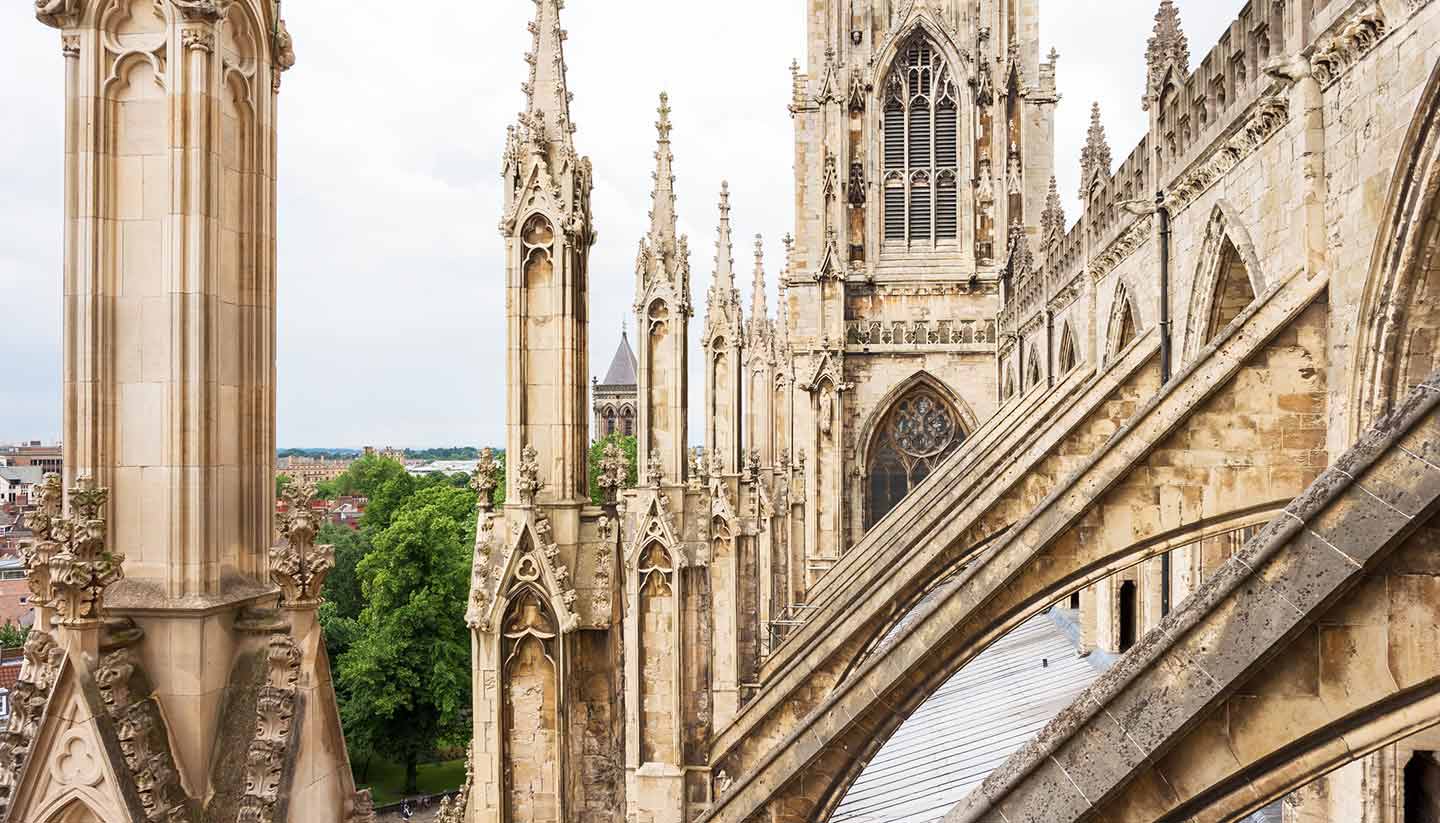York Travel Guide
About York
Too often cities are called ‘unique’, but there are few that can be considered as truly unique as York. After all, how many rest on the foundations of both a Roman fortress and a vital Viking settlement? How many were a linchpin of both the Norman conquest and English Civil War? Ancient, attractive and enduring, York stands alone.
For several hundred years, this was England’s second city, the gateway to the north, crucially positioned between the rivers Ouse and Foss. Today, it still wears the marks of its remarkable history – with typical Yorkshire pride.
Walking the cobbled streets of the medieval-conjuring Shambles or scaling the old city walls, you can feel history at your feet, while every time someone digs up the ground, the past comes bursting to the surface.
Most visitors start with the extraordinary York Minster, the largest Gothic cathedral in Northern Europe. Its soaring spires gleam in the sun and imbue the city with mystery at night, brooding over the skyline.
Then there's the formidable Clifford’s Tower (started by William the Conqueror), which is reminiscent of a French castle, and the famous ‘Bars’ - medieval gatehouses that punctuate the old city walls. Finally, there are many impressive museums exploring the potency of York’s past lives.
Of course, York is also a modern city that doesn’t depend only on tourism. Straight-talking and friendly, the locals appreciate the city’s incredible past without being paralysed by it.
While exploring the shadowy medieval alleyways between streets, stopping in at old rickety pubs and quaint tea rooms, you’ll also find noisy bars and live music venues catering to the sizable student population, as well as a few bohemian cafes and little art galleries.
Meanwhile, York’s restaurant scene is dynamic and well respected, with some superb examples of British gastronomy and plenty of top-notch pub grub.
Ultimately, though, this fascinating city is dominated by its venerable architecture – York is truly one of the most beautiful places in Britain. Especially so in autumn and winter when, despite the cold, the medieval atmosphere and looming Minster make it even more mysterious and alluring than usual.


